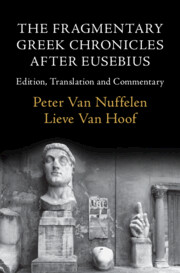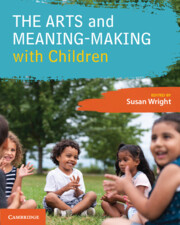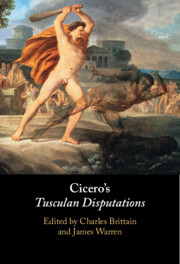Refine listing
Actions for selected content:
1294859 results in Books

The Fragmentary Greek Chronicles after Eusebius
- Edition, Translation and Commentary
-
- Published online:
- 11 September 2025
- Print publication:
- 24 July 2025

On Practicing Diversity
- Organizational Worldmaking through Exploration, Experimentation, and Engagement
-
- Published by:
- Bristol University Press
- Published online:
- 11 September 2025
- Print publication:
- 15 May 2025

The Arts and Meaning-Making with Children
-
- Published online:
- 11 September 2025
- Print publication:
- 25 September 2025
-
- Textbook
- Export citation

Post-Multiculturalism, Religion and Recognition
-
- Published by:
- Bristol University Press
- Published online:
- 11 September 2025
- Print publication:
- 17 June 2025

Rethinking Citizenship in Central and Eastern Europe
- Insights from Education and Political Research
-
- Published by:
- Bristol University Press
- Published online:
- 11 September 2025
- Print publication:
- 23 May 2025

Memory Politics after Mass Violence
- Attributing Roles in the Memoryscape
-
- Published by:
- Bristol University Press
- Published online:
- 11 September 2025
- Print publication:
- 20 June 2025

Cicero's Tusculan Disputations
-
- Published online:
- 11 September 2025
- Print publication:
- 18 September 2025
5.2 (11) - On the Generation and Order of the Things Which Come after the First
- from Ennead Five
-
- Book:
- Plotinus: The Enneads
- Published online:
- 11 September 2025
- Print publication:
- 11 September 2025, pp 552-555
-
- Chapter
- Export citation
References
-
- Book:
- Legacy in the Landscape
- Published online:
- 11 November 2025
- Print publication:
- 11 September 2025, pp 171-190
-
- Chapter
- Export citation
2.8 (35) - On Seeing, or On How It Is That Distant Things Appear Small
- from Ennead Two
-
- Book:
- Plotinus: The Enneads
- Published online:
- 11 September 2025
- Print publication:
- 11 September 2025, pp 204-207
-
- Chapter
- Export citation
Index
-
- Book:
- Through the Roof
- Published online:
- 28 August 2025
- Print publication:
- 11 September 2025, pp 289-295
-
- Chapter
- Export citation
4 - Financializing the American Economy and Housing Market
-
- Book:
- Through the Roof
- Published online:
- 28 August 2025
- Print publication:
- 11 September 2025, pp 109-146
-
- Chapter
- Export citation
Copyright page
-
- Book:
- Less Than Victory
- Published online:
- 16 October 2025
- Print publication:
- 11 September 2025, pp iv-iv
-
- Chapter
- Export citation
1 - African Diasporic Worlds
- from Part I - Black Geographies
-
- Book:
- Black Catholic Worlds
- Published online:
- 28 August 2025
- Print publication:
- 11 September 2025, pp 37-80
-
- Chapter
- Export citation
Preface to the Second Edition
-
- Book:
- Plotinus: The Enneads
- Published online:
- 11 September 2025
- Print publication:
- 11 September 2025, pp ix-xii
-
- Chapter
- Export citation
Index
-
- Book:
- Learning through Social Work Stories-That-Matter
- Published online:
- 28 August 2025
- Print publication:
- 11 September 2025, pp 365-370
-
- Chapter
- Export citation
Part II - Lenses and Lessons
-
- Book:
- Learning through Social Work Stories-That-Matter
- Published online:
- 28 August 2025
- Print publication:
- 11 September 2025, pp 311-364
-
- Chapter
- Export citation
3.5 (50) - On Love
- from Ennead Three
-
- Book:
- Plotinus: The Enneads
- Published online:
- 11 September 2025
- Print publication:
- 11 September 2025, pp 293-306
-
- Chapter
- Export citation
2 - Memes and Multimodal Figuration
-
- Book:
- The Language of Memes
- Published online:
- 12 September 2025
- Print publication:
- 11 September 2025, pp 11-25
-
- Chapter
- Export citation
Chapter 3 - Symbolism and Expressionism
- from Part I - Forms and Genres
-
-
- Book:
- The Cambridge Companion to Modernist Theatre
- Published online:
- 28 August 2025
- Print publication:
- 11 September 2025, pp 55-71
-
- Chapter
- Export citation
